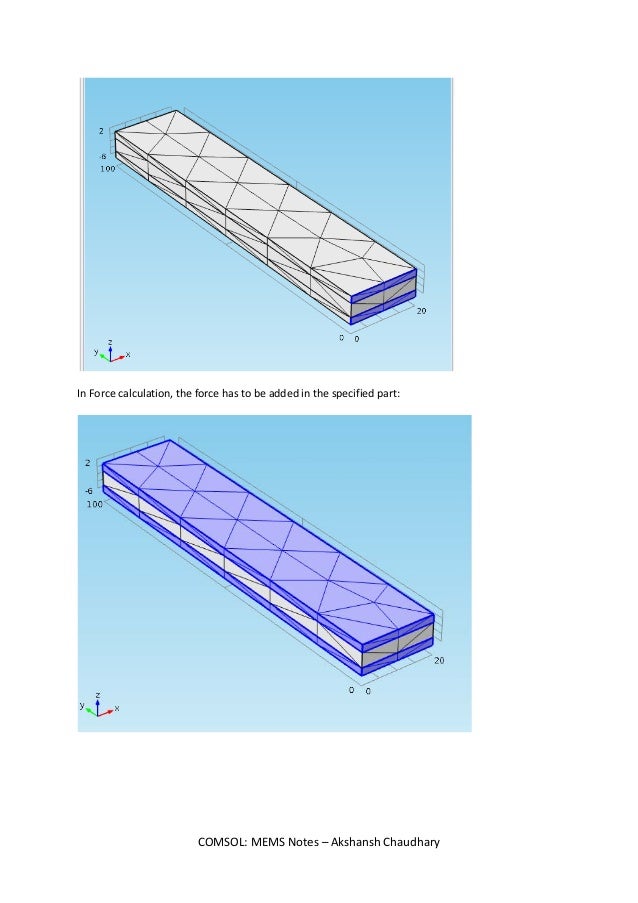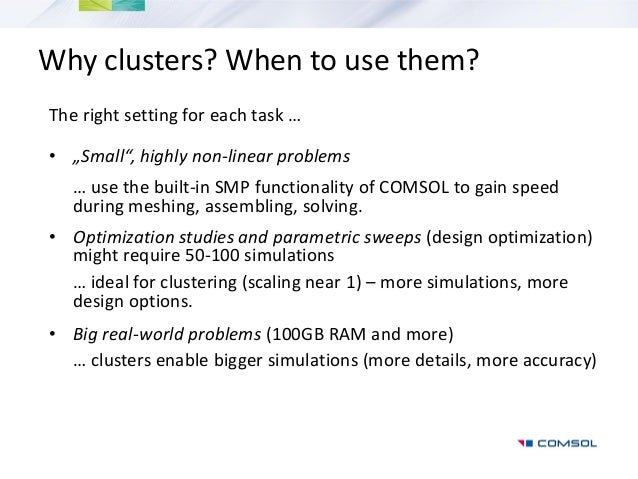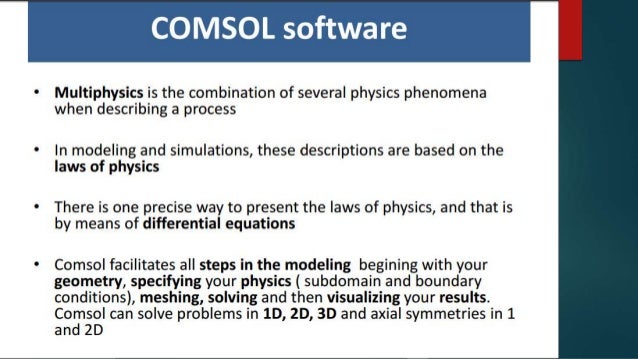

For this reason, the modeling of multiphase flow is usually divided into different scales. This implies that it is numerically impossible to resolve multiphase flows from the smallest to the largest scales using the same mechanistic model throughout the whole range of scales. These scales can span about eight orders of magnitude, where the largest length scale may be a hundred million times larger than the smallest scales. The smallest scale can be around fractions of micrometers, while the largest scales are up to meters or tens of meters. The study of multiphase flows with mathematical modeling may be done at several scales. Multiphase Flow Modeling on Different Scales We will also review the models and modeling strategies that are available in the CFD and Microfluidics modules.
#Comsol multiphysics tutorials series
This series of blog posts mainly focuses on gas-liquid and liquid-liquid mixtures, although it also briefly discusses solid-gas and solid-liquid mixtures.
#Comsol multiphysics tutorials how to

In other words, we need to check that the wave can be switched between two output ports by applying a voltage across the waveguide in one of the arms and then tuning it. Spatial Switchįinally, we want to confirm that we can use the device as a spatial switch if we have a scenario where all the input and output ports are connected to other fibers or waveguides. Gemetry is scaled by a factor of 80 in the y-direction.

Again, we can confirm our results with an electric field norm plot.Įlectric field norm plot confirming that the power is close to equal in the two interferometer waveguide arms for a 380 micrometer long directional coupler. If we plot the results of the parameter sweep, we will see that a coupler length of 380 μm will ensure a 50/50 split of power between the arms. This can be achieved by monitoring the power difference in the two arms and sweeping the length of the coupler. Next, we have to find how long the coupler needs to be in order to give us our desired 50/50 split of incident power through the two output arms of the Mach-Zehnder interferometer. Plotting the total modal transmission over the bend radius of curvature in meters. We can also confirm our results by generating an electric field norm plot. Doing so shows us that a minimum bend radius of 2.5 millimeters gives us an acceptable 2% loss (the plot depicts a total modal transmission of 98%). To figure this out, we can plot the total modal transmission over the increasing bend radius of the curvature. In order to meet the general requirement of keeping the overall size of the device small, we need to find the smallest possible bend radius that also provides low loss. To determine the ideal design of the device, we turn to COMSOL Multiphysics and the Wave Optics Module. We need it to produce low loss, give us a 50/50 split of power through the two output arms, and be used as a spatial switch. Suppose we want to design a Mach-Zehnder modulator. In that case, we can tune the voltage so the light switches between the two output ports.Ī Mach-Zehnder modulator with an applied voltage on one of the interferometer arms. Then, the two waves combine again in a second directional coupler, and thanks to the phase difference created by the voltage, we get an amplitude modulation.Īlternatively, if the modulator’s input and output ports are all connected to other waveguides, the device can act as a spatial switch instead of an amplitude modulator.

By applying a voltage across one of the two interferometer arms, we can alter the refractive index of the waveguide material and trigger a phase shift of the propagating electromagnetic wave. Its name stems from the use of a Mach-Zehnder interferometer located between two 50/50 directional couplers. The modulator controls the amplitude of an optical wave as it passes through the device. To understand how it works and how to optimize its design, you can use the COMSOL simulation software. The Mach-Zehnder modulator is a type of optical modulator used for communication applications.


 0 kommentar(er)
0 kommentar(er)
